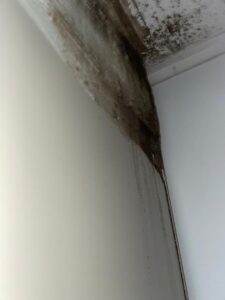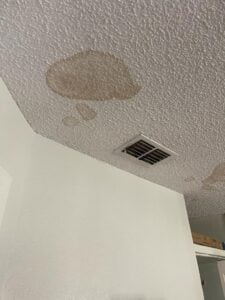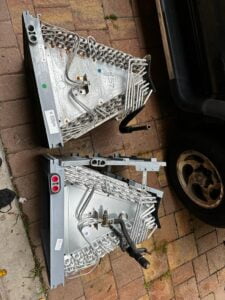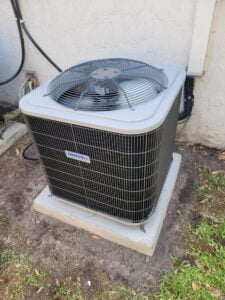8-Step HVAC Dehumidifier Guide for Ultimate Comfort, Health, and Efficiency
In the world of HVAC systems, where indoor comfort and air quality reign supreme, the role of dehumidifiers stands as a cornerstone of efficient and healthy living spaces. As humidity levels fluctuate and impact both comfort and health, HVAC dehumidifiers emerge as indispensable tools. In this extensive guide, we embark on a journey to uncover the intricate workings, benefits, applications, and maintenance of HVAC dehumidifiers. By the time we conclude, you’ll have a comprehensive understanding of these devices and their significant role in creating optimal indoor environments.
Benefits of HVAC Dehumidifiers
The benefits of HVAC dehumidifiers extend far beyond moisture removal. We explore how these devices contribute to improved indoor air quality, energy efficiency, mold prevention, and overall health. From enhanced respiratory well-being to prolonged HVAC system lifespan, we uncover the multifaceted advantages these devices bring to indoor environments.
Humidity control within indoor spaces is a paramount concern, impacting comfort, air quality, and overall well-being. In the realm of HVAC systems, dehumidifiers emerge as essential tools for achieving optimal humidity levels. In this exploration, we uncover the diverse benefits that HVAC dehumidifiers bring to residential and commercial environments alike. From health improvements to energy savings, these devices play a transformative role in creating a more comfortable and enjoyable indoor atmosphere.
1. Enhanced Indoor Air Quality
Excessive humidity creates an environment conducive to the growth of allergens like mold, dust mites, and bacteria. HVAC dehumidifiers combat this issue by effectively removing excess moisture from the air. By minimizing the growth of these harmful irritants, these devices contribute to improved indoor air quality. This, in turn, reduces the risk of respiratory allergies, asthma triggers, and other related health concerns.
2. Optimal Comfort
High humidity levels can lead to discomfort, even in temperature-regulated environments. HVAC dehumidifiers help strike a balance, ensuring that the air feels cool and comfortable. By maintaining an ideal relative humidity level, these devices eliminate that sticky feeling associated with excessive moisture, creating an environment where occupants can relax and thrive.
3. Mold Prevention and Structural Preservation
Mold growth poses not only health risks but also structural concerns for buildings. HVAC dehumidifiers work diligently to keep humidity levels in check, preventing mold from taking root on walls, ceilings, and within ductwork. By thwarting mold growth, these devices preserve the integrity of building materials, reducing the need for costly repairs and prolonging the lifespan of the property.

4. Energy Efficiency
Humidity affects how we perceive temperature; high humidity can make the air feel warmer than it actually is. This phenomenon forces cooling systems to work harder, consuming more energy to maintain a comfortable temperature. HVAC dehumidifiers alleviate this strain, leading to reduced energy consumption and lower utility bills. By creating a more efficient environment for temperature control, these devices contribute to sustainability efforts.
5. Increased Lifespan of HVAC Systems
Excess moisture isn’t just harmful to human health—it can also damage HVAC equipment. Moisture can corrode components, leading to breakdowns and reduced system efficiency. HVAC dehumidifiers safeguard your investment by maintaining optimal moisture levels and extending the lifespan of your heating and cooling systems.
6. Personal Health and Well-Being
Beyond allergen reduction, HVAC dehumidifiers can alleviate respiratory discomfort for individuals with asthma, allergies, and other respiratory conditions. Breathing in air with controlled humidity levels can lead to fewer symptoms and a better quality of life for those affected by respiratory issues.
7. Property Preservation
High humidity can wreak havoc on furnishings, artwork, and valuables. Wood warps, metals corrode, and cherished belongings deteriorate. HVAC dehumidifiers play a crucial role in protecting your investments, ensuring that your possessions remain in pristine condition over time.
8. Improved Sleep Quality
Comfortable humidity levels can positively impact sleep quality. Excessive humidity can lead to discomfort and restlessness during sleep. By maintaining a balanced and comfortable atmosphere, HVAC dehumidifiers contribute to a more restful night’s sleep.
What are the different types of HVAC dehumidifiers available, and how do you choose the right one for your specific needs?
Types of HVAC Dehumidifiers:
- Refrigerative Dehumidifiers: These are the most common type of HVAC dehumidifiers. They work by drawing in air, cooling it to condense the moisture, and then reheating the air before releasing it. They are effective in various settings and are often integrated into central HVAC systems.
- Desiccant Dehumidifiers: These dehumidifiers use a desiccant material to absorb moisture from the air. They are particularly effective in colder environments and can operate at lower temperatures compared to refrigerative dehumidifiers. They are suitable for applications where maintaining low humidity levels is critical.
- Ventilating Dehumidifiers: These systems combine dehumidification with ventilation. They introduce fresh outdoor air while simultaneously removing excess moisture from the indoor air. They are often used in situations where both humidity and indoor air quality need to be addressed.
Choosing the Right HVAC Dehumidifier:
- Consider the Environment: Evaluate the climate and average humidity levels in your area. If you’re in a region with high humidity year-round, a refrigerative dehumidifier might be suitable. If you’re dealing with cold temperatures, a desiccant dehumidifier could be a better choice.
- Size of the Space: Determine the square footage of the area you need to dehumidify. Different dehumidifiers have varying capacities, so choose one that matches the size of the space. Oversized dehumidifiers might cycle on and off frequently, while undersized ones won’t effectively control humidity.
- Indoor Air Quality Needs: Consider whether you need additional features, such as air filtration or purification. Some HVAC dehumidifiers come with built-in air purification capabilities, helping to improve the overall indoor air quality.
- Energy Efficiency: Look for ENERGY STAR-certified models that meet energy efficiency standards. These units not only save on energy bills but also reduce environmental impact.
- Installation and Integration: Determine if the dehumidifier can be integrated into your existing HVAC system or if it needs to be installed separately. Also, consider the ease of installation and maintenance.
- Humidity Control: Some dehumidifiers offer advanced humidity control options, allowing you to set specific target humidity levels. This can be particularly useful if you have specific requirements for your indoor environment.

- Budget: Factor in the initial cost, as well as potential long-term savings in energy costs and maintenance when making your decision.
- Professional Consultation: Consulting with an HVAC professional can provide valuable insights. They can assess your specific needs, recommend the appropriate type and capacity, and ensure proper installation.
By carefully evaluating your environment, requirements, and preferences, you can select the right type of HVAC dehumidifier that effectively addresses your specific needs and enhances your indoor comfort and air quality.
Maintenance and Care
To ensure peak performance, regular maintenance is imperative. We delve into the maintenance routines required to keep HVAC dehumidifiers operating efficiently. From cleaning coils and filters to monitoring drain lines and electrical connections, this chapter provides a comprehensive guide to extending the lifespan of your investment.
HVAC dehumidifiers play a crucial role in maintaining indoor comfort and air quality. To ensure that these devices continue to operate at their best, regular maintenance is essential. In this comprehensive guide, we delve into the world of HVAC dehumidifier maintenance, covering essential tasks that can prolong their lifespan, optimize efficiency, and ensure the health and comfort of your indoor space.
1. Regular Filter Cleaning and Replacement
The air filter is the first line of defense against airborne particles and contaminants. Over time, it can become clogged with dust, debris, and allergens, hindering airflow and efficiency. Regularly inspect and clean the filter according to the manufacturer’s recommendations. Depending on usage, the filter might need replacement every few months. Clean filters not only improve air quality but also allow the dehumidifier to operate more effectively.
2. Coils Cleaning
The coils in your HVAC dehumidifier are essential for the moisture removal process. Dust and dirt can accumulate on the coils, reducing their efficiency and potentially leading to frost buildup. Gently clean the coils using a soft brush or cloth, being careful not to damage the fins. This simple step can significantly improve the dehumidifier’s performance and prevent issues like excessive noise or inadequate dehumidification.

3. Drainage System Inspection
Examine the drainage system of your HVAC dehumidifier regularly. Check for any blockages or obstructions in the drain lines that might prevent proper water removal. Ensure that the drain pan is clean and free from debris. Regularly empty the water collection tank to prevent overflow and leaks. If your dehumidifier has a drainage hose, ensure that it’s clear of any obstructions to facilitate continuous drainage.
4. Proper Ventilation and Airflow
Airflow is crucial for efficient dehumidification. Check the air intake and exhaust grilles for dust, debris, and obstructions. Obstructed grilles can hinder airflow, leading to decreased performance and potential overheating. Regularly vacuum or wipe down these areas to ensure optimal ventilation and prevent strain on the dehumidifier’s components.
5. Professional Maintenance and Inspections
While DIY maintenance is important, enlisting the expertise of a professional HVAC technician is equally crucial. Schedule annual inspections to identify issues that may not be visible during routine maintenance. Technicians can thoroughly clean internal components, check for wear and tear, and address any potential repairs. This proactive approach can prevent costly breakdowns and ensure that your HVAC dehumidifier operates optimally year-round.
6. Monitor Humidity Levels
Regularly monitor the humidity levels in your indoor space using a hygrometer. This allows you to assess the effectiveness of your HVAC dehumidifier and make necessary adjustments to settings. Adjusting humidity levels based on seasonal changes and occupancy can optimize the dehumidifier’s performance and energy efficiency.
Troubleshooting Common Issues
Even with diligent maintenance, issues may arise. This chapter provides insights into common problems that HVAC dehumidifiers might encounter. From frost buildup on coils to inadequate dehumidification, we offer troubleshooting tips to address these challenges and restore optimal functionality.
Maintaining optimal indoor comfort and air quality is a paramount concern for any homeowner or building manager. HVAC dehumidifiers play a vital role in achieving this goal by regulating humidity levels. However, like any mechanical system, these devices can encounter issues over time. In this comprehensive guide, we explore the maintenance routines necessary to keep HVAC dehumidifiers operating smoothly and delve into troubleshooting common problems that may arise. By mastering maintenance and troubleshooting, you’re equipped to maintain a healthy and comfortable indoor environment.
1. Routine Maintenance Essentials
Before diving into troubleshooting, it’s important to establish a regular maintenance routine:
– Filter Cleaning and Replacement: Dirty filters can hinder airflow and reduce efficiency. Clean or replace filters as per manufacturer recommendations to ensure proper performance.
– Coil Cleaning: Dust and debris accumulation on coils can lead to frost buildup and reduced dehumidification effectiveness. Regularly clean coils to maintain optimal performance.
– Drainage System Check: Inspect the drainage system for clogs or blockages that could impede water removal. Ensure the drain pan is clean and free from debris.
– Ventilation Grille Cleaning: Clear air intake and exhaust grilles from dust and obstructions to promote efficient airflow.
2. Troubleshooting Common Issues
Issue 1: Inadequate Dehumidification
– Solution: Ensure that the unit is appropriately sized for the space. Check for obstructions in the intake and exhaust grilles. Verify that the unit is operating in a suitable temperature range. If the issue persists, consult a professional to assess the unit’s capacity and functionality.
Issue 2: Frost Buildup on Coils
– Solution: Check if the room temperature is too low for the dehumidifier to operate effectively. If the room is cold, raise the temperature slightly. Ensure that the airflow is not obstructed by a dirty air filter or blocked grilles. If frost persists, a refrigerant leak or malfunction may be the cause, requiring professional attention.
Issue 3: Excessive Noise
– Solution: Vibrations due to improper placement or instability can lead to noise. Place the dehumidifier on a level surface and ensure all components are secure. If the noise persists, it could indicate a malfunctioning motor or fan, necessitating professional inspection.
Issue 4: The unit Doesn’t Turn On
– Solution: Verify that the power cord is plugged in and the outlet is functional. Check the circuit breaker or fuse box to ensure there are no tripped breakers. If the unit still doesn’t turn on, there may be an electrical issue that requires professional repair.

Issue 5: Water Leakage
– Solution: Inspect the drainage system for clogs or blockages. Ensure that the drain pan is properly positioned and not overflowing. If the unit has a drainage hose, check for kinks or obstructions that could impede water flow.
Issue 6: Strange Odors
– Solution: Clean the coils and air filters to remove any accumulated dirt, dust, or mold. Ensure that the drainage system is clear and functioning properly to prevent stagnant water, which can cause odors. If odors persist, professional cleaning may be necessary.
Future Trends in HVAC Dehumidification
As technology advances, the world of HVAC dehumidification evolves. We explore emerging trends, from smart controls and energy-efficient innovations to hybrid systems that combine heating, cooling, and dehumidification. By glimpsing into the future, we prepare for the possibilities that lie ahead.
Understanding Humidity and Its Impacts
In this chapter, we not only explore the concept of relative humidity but also delve into how humidity affects different aspects of our lives. We discuss the discomfort caused by high humidity levels, the potential health risks associated with excessive moisture, and the structural damage that can arise due to prolonged exposure to humidity. By understanding the profound impacts of humidity, readers gain a clearer perspective on the importance of controlling it within indoor spaces.
The Mechanics of HVAC Dehumidifiers
Building upon the basics of humidity, this chapter delves deeper into the mechanics of HVAC dehumidifiers. We break down the process of moisture removal, discussing how the cooling and reheating cycle works. By explaining terms like dew point and condensation, readers gain insight into the underlying principles that enable these devices to effectively remove excess moisture from the air. Diagrams and visual aids help illustrate the intricate components involved in the dehumidification process.
Partnering with The AC Therapist for Expert HVAC Dehumidifier Solutions
As you navigate the diverse landscape of HVAC dehumidifiers and seek to tailor indoor environments to perfection, The AC Therapist stands as a trusted ally in your journey. With their deep expertise in heating, ventilation, and air conditioning, The AC Therapist offers a wealth of knowledge that extends to the realm of dehumidification.
From the array of dehumidifier types to the nuances of proper sizing, The AC Therapist’s professional insights can guide you toward informed decisions that align with your unique needs. Their commitment to excellence extends beyond recommendations—The AC Therapist also provides installation expertise, ensuring that your chosen HVAC dehumidifier seamlessly integrates into your existing system.
By enlisting The AC Therapist’s services, you’re not only investing in state-of-the-art HVAC technology but also tapping into a wealth of experience dedicated to your comfort and well-being. Their customer-centric approach ensures that your requirements are met with precision, whether you’re seeking to enhance indoor air quality, improve energy efficiency, or maintain optimal humidity levels.
As you embark on your HVAC dehumidification journey, consider The AC Therapist not just as a service provider, but as a partner dedicated to your satisfaction. With their guidance, you’re poised to create an indoor haven that balances comfort, health, and efficiency—a space where The AC Therapist’s expertise merges seamlessly with your aspirations for a more comfortable and enjoyable living environment.









